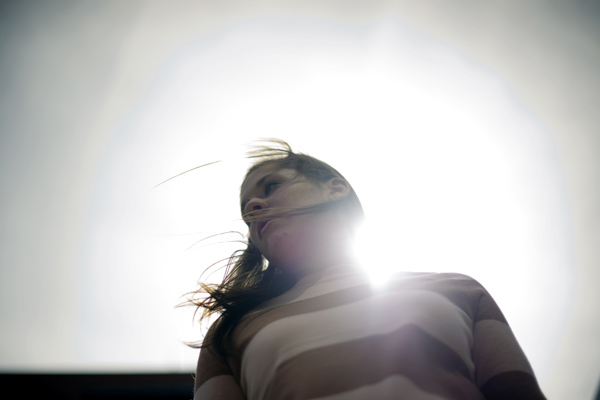Next stop: space

When she was in middle school, Rachael Tompa turned down her first opportunity to visit the Kennedy Space Center in Cape Canaveral, Fla. At the time, Tompa wasn’t much interested in space travel. But by the following year she’d revised her life plan to include “becoming an astronaut” and asked her parents if her family could return. Unfortunately, the Tompas had other summer vacation plans.
Thankfully, Tompa, E/S’14, would only have to wait a few more years to return to the launch site of each and every one of NASA’s human space flights. That’s because she landed her second Northeastern co-op at the Sikorsky Development Flight Center in West Palm Beach, just a couple hours’ drive from the space center. While there, she got her private pilot’s license, the first step to becoming a full-fledged astronaut.
By the time she began researching colleges, Tompa knew her aeronautical dream was something more than an adolescent whim. She looked at a number of institutions with stellar aerospace programs, but she ultimately chose Northeastern because of co-op. “It gave me a good education and a way to see how this education applies,” said Tompa, a mechanical engineering and physics combined major who will graduate Friday at Northeastern’s commencement ceremony at the TD Garden in Boston. “I came in knowing I liked the aerospace and defense industry, but I didn’t know where I fit within that.”
Though she did have an inkling: For any aspiring astronaut, NASA is the holy grail. So when she heard that she’d been accepted into the internship program at the Jet Propulsion Laboratory in Pasadena, Calif., she knew she’d made the right choice some five years earlier.
At JPL, Tompa worked as a thermal engineer on three separate projects. Her main project focused on an unmanned telescope-carrying balloon mission. “The goal is to be a technology demonstration to show how long they can hold a telescope pointed at a star,” she explained. “And when you’re that high above the earth, it gets really cold. And electronics don’t work when they get really cold.” Tompa’s job was to develop models and simulations to make sure that the other elements on the vessel keep the electronics and optics within an appropriate temperature range.
Her second project also involved thermal modeling for a different unmanned mission, but the third gave her an entirely different perspective on life at JPL. “I was in a laboratory, running tests, doing data analysis,” she said.
The goal of that project was to build a ground system that recreates the temperature conditions of space on a tabletop in the lab. With such a system, she and her team were able to explore how loop heat pipes, which help regulate temperature across a device, work when they’re up in space.
When she arrived at Northeastern, Tompa set a goal of doing three aerospace-related co-ops, which she completed. She got a taste for industry, a taste for research, plus a standout education in mechanical engineering, which she thought would provide “a broader and better base” for an aeronautics career.
Her successes earned her one of the Outstanding Cooperative Education Awards, as well as a job offer from JPL. Instead, she’ll be pursuing another opportunity: a doctorate in aeronautics and astronautics at Stanford University. Her next stop? Probably the International Space Station.





